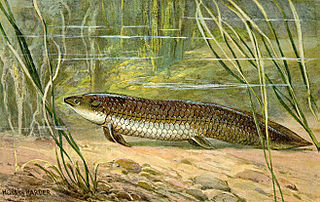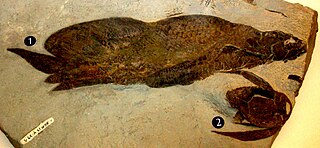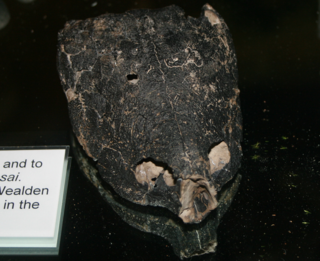
The Phrynosomatidae are a diverse family of lizards, sometimes classified as a subfamily (Phrynosomatinae), found from Panama to the extreme south of Canada. Many members of the group are adapted to life in hot, sandy deserts, although the spiny lizards prefer rocky deserts or even relatively moist forest edges, and the short-horned lizard lives in prairie or sagebrush environments. The group includes both egg-laying and viviparous species, with the latter being more common in species living at high elevations.

Champlain College is a private college in Burlington, Vermont. Founded in 1878, Champlain offers on-campus undergraduate and online undergraduate courses through Champlain College Online, along with online certificate and degree programs and master's degree programs, in over 80 subject areas. Champlain enrolls 3,060 undergraduate students on its Burlington campus from 40 states and 18 countries.

Ceratodontidae is an extinct family of lungfish with fossils known from the earliest Triassic to the Eocene.
The 1850–51 United States House of Representatives elections were held on various dates in various states between August 5, 1850 and November 4, 1851. Each state set its own date for its elections to the House of Representatives before the first session of the 32nd United States Congress convened on December 1, 1851. Elections were held for all 233 seats, representing 31 states.

Cyclanorbis is a genus of softshell turtles in the family Trionychidae. The genus is endemic to Africa.

Pomacea is a genus of freshwater snails with gills and an operculum, aquatic gastropod mollusks in the family Ampullariidae, the apple snails. The genus is native to the Americas; most species in this genus are restricted to South America.
Gonioglyptus is an extinct genus of trematosaurian temnospondyl within the family Trematosauridae. It is known from the Early Triassic Panchet Formation of India. It contains two species: G. longirostris and G. fragilis. The species G. kokeni from Pakistan has since been reclassified into Aphaneramma.
Pachygonia is an extinct genus of temnospondyl amphibian from the Early Triassic Panchet Formation of India. It contains a single species, P. incurvata. It may potentially be a member of the family Brachyopidae.

Scaumenacia is an extinct genus of prehistoric lungfish. It lived around the Devonian in North America alongside another prehistoric lungfish: Fleurantia. It lived from approximately 384 to 376 millions of years ago.

Mitrella is a genus of small sea snails, marine gastropod mollusks in the family Columbellidae, the dove shells or dove snails.
Rhadalognathus was a prehistoric crocodile-like amphibian that belongs to the Mastodonsauridae family. Not much is known about this creature but it lived in the Triassic period. Rhadalognathus is also the name of the genus in which the organism belongs within. Rhadalognathus was found in northern Arizona, US, by S. P. Welles in 1947. The size of the organism is unknown but its skull is about 17in long and weighs 7lbs.

Hippohyini was an extinct tribe of Suinae which existed in Asia during the Pliocene.

Conohyus was an extinct genus of suid that existed during the Miocene in Europe and in Asia.
Crisia is a genus of bryozoans in the family Crisiidae. Some species are known from the fossil record.

Baiera is a genus of prehistoric gymnosperms in the order Ginkgoales. It is one of the oldest fossil foliage types of Ginkgoales, and is related to the genera Ginkgo and Ginkgoites. Fossils of Baiera are found worldwide, and have been known from the Permian to the Cretaceous.

Helochelydra is an extinct genus of extinct stem turtle known from the Early Cretaceous (Barremian) of the Isle of Wight, southern England.

Abraham Hugo Miller was a businessman, pastor and state legislator in Arkansas. He served in the Arkansas House of Representatives in 1874 and 1875. At the peak of his business operations, he was considered the wealthiest man in Arkansas.
Lichenalia is an extinct genus of cystoporate bryozoan belonging to the family Rhinoporidae. It is known from the Upper Ordovician to the Middle Silurian periods, which spanned from approximately 460 to 430 million years ago. The genus had a cosmopolitan distribution, with fossil specimens found in various regions of the world, including North America, Europe, and Asia.

Fistuliporidae is an extinct family of bryozoans within the order Cystoporida. Members of this family have lived from the early Ordovician to the late Triassic period.
Cystodictyonidae is an extinct family of [bryozoa]]ns within the order Cystoporida. Members of this family have been known to live from the Ordovician to the Paleogene period.












